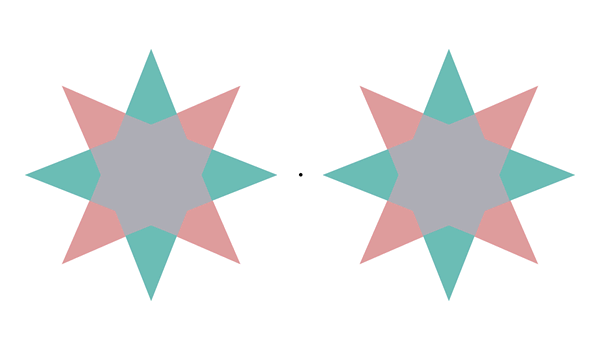
To do:
Fixate your gaze on the center of one of the figures and stare at it for some time (20-30 seconds) while it cycles (without moving your eyes). After several iterations you’ll start noticing that the empty outlines fill in with ghostly redish or bluish colors! These illusory colors are called “afterimages”. Interestingly, the colors of the afterimages vary, which is puzzling because they come from the same original figure. Moreover, the shape of the outlines determines the filled-in color, which is complementary to the color of the same shape in the original figure.
What’s happening?
It is well known that viewing a colored surface can induce a vivid afterimage of the complementary color (for example, the color red induces a greenish/bluish afterimage). Our illusion shows that a colored image can produce different colored afterimages at the same retinal location. The perceived afterimage colors depend on the contours that are presented after the colored image. More specifically, the illusion shows that the afterimage colors spread and mix between those contours. In addition, alternating different contours after the original colored image causes rapidly switching afterimage colors.
Read more about the illusion and possible explanations.
Van Lier, Vergeer, Anstis, 2009, Filling-in afterimage colors between the lines, Current Biology, 19 (8), R323-R324.
